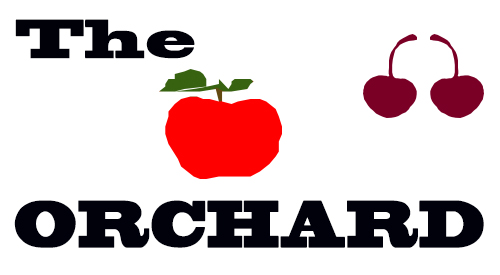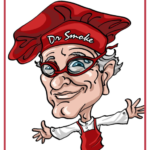Fri 19 Jun 2020
APPLE WOOD FOR SMOKING? – WHY WE DON’T USE IT!
Posted by Culinary CrewRead other related stories: General Smoking Information , Wood Questions , Wood Science
No Comments
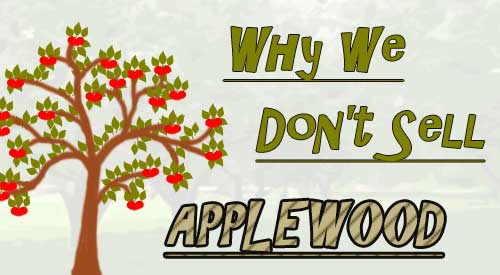
We don’t use or sell Apple wood for smoking! Too many potential health risks
We don’t offer any applewood for sale! Here's why. Click To Tweet
Why we Don’t Use or Sell Apple wood for Smoking– Those of you living outside of New York State may be surprised to learn that we are the number two state for apple production behind Washington state. However, we do rank number one for the greatest number of varieties of apples. Annually, our state produces nearly 30 million bushels of apples. So, why not use apple wood for smoking of foods?
With an abundance of apple trees, the assumption would be that our number one hardwood offering must be apple. However, you would be wrong.
Apple Wood for Smoking? Abundance Comes at a Cost
Just because apple wood is abundant in our state doesn’t mean it should automatically be sold as a cooking wood. This is without question, a favorite fruit. When something is at high demand it is protected in order to assure the supply for that demand. For this reason, growers of apples put their priority into preserving the fruit production.
Keep in mind, an apple tree may not start producing fruit for the first 8-10 years but it can produce for 50 or more years. In fact, with careful and frequent pruning, these trees do remain in the orchard bearing fruit if they don’t become infested with a disease or pest.
Good Agricultural Practices
Around the year 2001, the New York apple industry began working on a strategic plan in conjunction with Cornell University to develop what they referred to as an integrated fruit production program. The purpose of the program was to ensure apples were produced using environmentally friendly processes to include eco-friendly insect, mite, disease, vertebrate and weed pest management. In other words, this was meant to use more “friendly” pesticide applications and methods. What didn’t change is the that chemicals were still being used.
The USDA has done extensive study on pesticides and their life on agricultural products (USDA Pesticide Data Program). As a result of the studies, here is a list of the common pesticides found to be present on apples in what is termed residual form.
USDA Findings:
| Diphenylamine (DPA) | 82.8% |
| Thiabendazole | 81.0% |
| Pyrimethanil | 75.2% |
| Chlorantraniliprole | 41.2% |
| Acetamiprid | 28.7% |
| Imidacloprid | 20.2% |
| Carbendazim (MBC) | 17.3% |
| Tetrahydrophthalimide (THPI) | 16.7% |
| Methoxyfenozide | 15.9% |
| Fludioxonil | 13.4% |
| Thiacloprid | 12.7% |
| Boscalid | 12.7% |
| Pyraclostrobin | 11.8% |
| Phosmet | 9.6% |
| Azinphos methyl | 9.2% |
| Fenpyroximate | 8.5% |
| Endosulfan II | 8.1% |
| Myclobutanil | 8.1% |
| Diazinon | 6.5% |
| Trifloxystrobin | 5.8% |
| Spinetoram | 5.0% |
| Endosulfan I | 4.3% |
| Etoxazole | 3.3% |
| Pendimethalin | 3.3% |
| Fenpropathrin | 2.8% |
| Fenbuconazole | 2.7% |
| Carbaryl | 2.4% |
| Endosulfan sulfate | 1.9% |
| Flonicamid | 1.6% |
| Chlorpyrifos | 1.6% |
| Cyhalothrin, Total (Cyhalothrin-L + R157836 epimer) | 1.1% |
| Spinosad | 0.9% |
| o-Phenylphenol | 0.9% |
| Imazalil | 0.5% |
| Chlorpropham | 0.4% |
| Difenoconazole | 0.3% |
| Permethrin cis | 0.3% |
| Esfenvalerate+Fenvalerate Total | 0.1% |
| Buprofezin | 0.1% |
| Thiamethoxam | 0.1% |
| Pyriproxyfen | 0.1% |
| Tebuconazole | 0.1% |
| Pronamide | 0.1% |
| Methoxychlor olefin | 0.1% |
| Dicofol p,p’ | 0.1% |
| Permethrin trans | 0.1% |
| DCPA | 0.1% |
The premise for using all these pesticides is the common belief that apples cannot be grown without chemical pesticides. Despite efforts to institute ecofriendly practices, we remain dependent on chemicals. But here’s the kicker: apples are ranked number 4 out of 12 as a fruit most contaminated by pesticides. Washing with water doesn’t do enough either. The chemical pesticides can penetrate the skin into the flesh of the apple making every bite a risk.
Apple Wood for Smoking? In the Fruit, In the Tree
So what does this mean for the actual tree growing the apples? Spray the tree with chemical pesticides to protect the fruit production and consequently, you compromise the tree for any other purpose including cooking. Pesticide applications embed into the soil base of the tree, which then enters the root system, and is on the way to the other parts of the tree. Pesticides can also become air born as they turn into a vapor and travel by airflow (think wind). The bark of any tree is a great absorber of these air particles. Once pesticides enter the human body, they are stored in the colon. Symptoms then progress to stomach pains, abdominal pain, nausea, and vomiting. Certainly, toxicity can advance and produce colorectal cancer. Know that once the chemicals are absorbed into the tree’s roots and nutritional supply center, they are there for life.
As a company, SmokinLicious® just can’t participate in risk to the public’s health. If we can offer products that are as natural as possible, bark-free to prevent absorption of pollutants captured by the bark, we will do it.
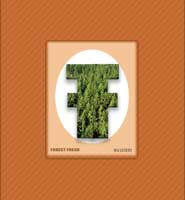
Given there are so many other choices for safe hardwoods free of potential chemical contamination. We opt to dismiss apple wood for smoking even though we are a state in apple abundance.
In conclusion SmokinLicious® makes you an informed consumer through valuable articles like this one. So leave us a comment and follow us or subscribe for more great recipes, techniques, tips, and the science behind the flavor and fire. Most importantly, that is SmokinLicious®.
SmokinLicious® Products:
Wood Chunks- Double & Single Filet
Wood Chips- Grande Sapore®, Minuto® & Piccolo®

More related reading on using Apple wood for smoking and other orchard woods see our smoking & Grilling tips and techniques.
Additionally, read more on orchard woods:
-ARE FRUITWOOD TREES LIKE THE APPLE “SNOW WHITE” BIT INTO?
-TO BARK OR NOT
-6 REASONS WHY CEDAR WOOD SHOULD NOT BE YOUR TOP CHOICE FOR COOKING
-THE BALANCE OF WOOD LIGNIN IN BARBECUE
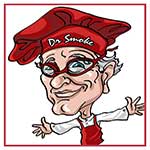
Dr. Smoke- Now you know the reasons we don’t use or sell Apple wood or any other Orchard woods for Smoking, Grilling or Cooking!
